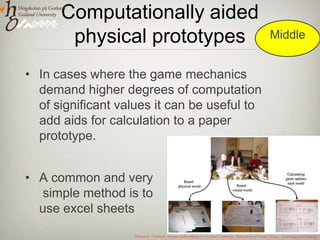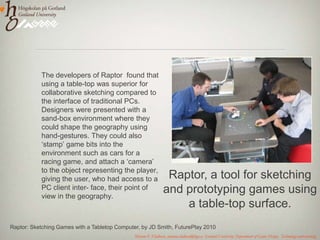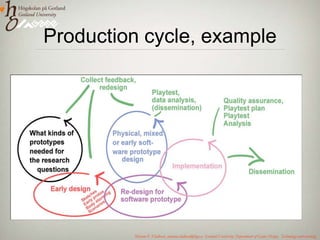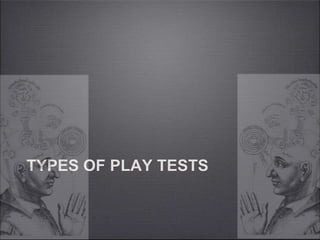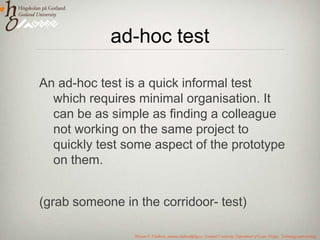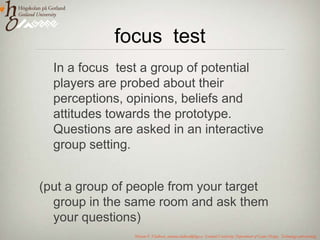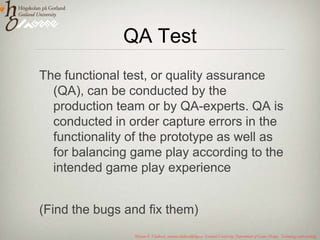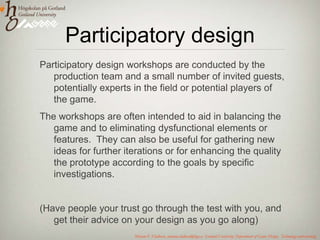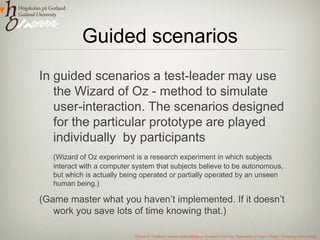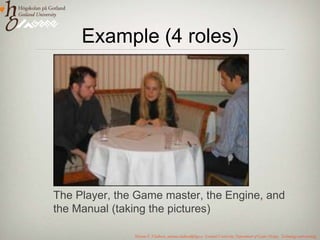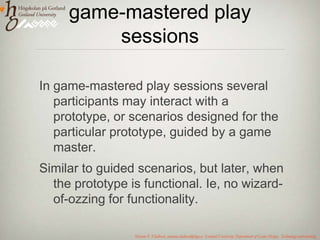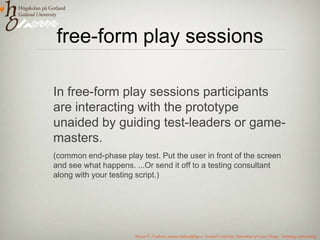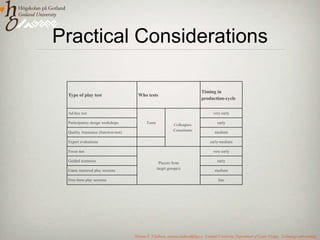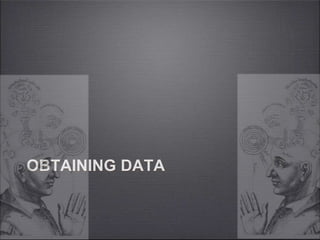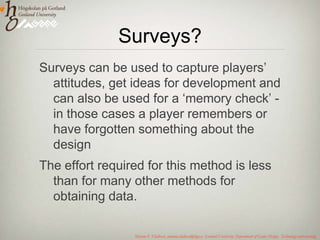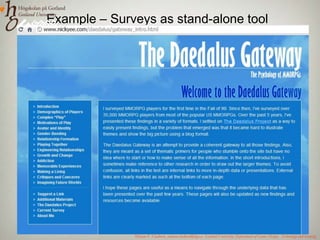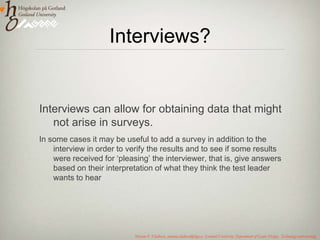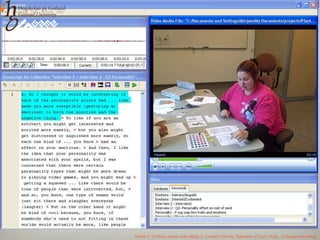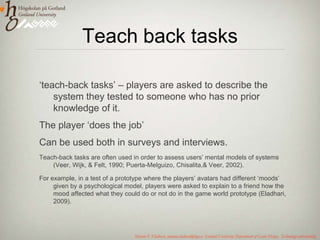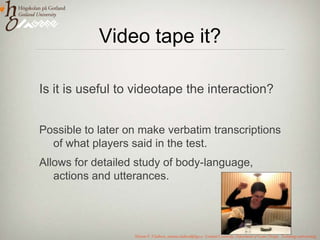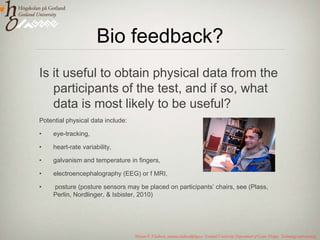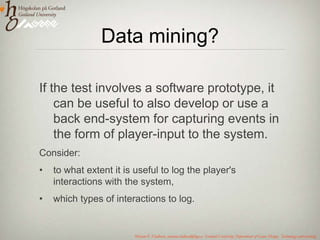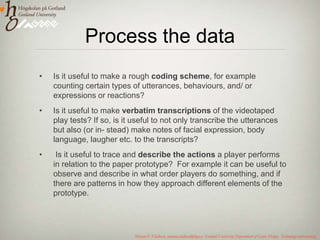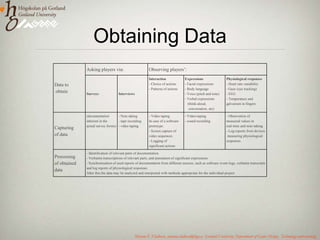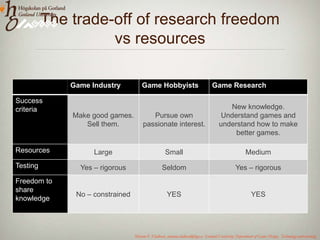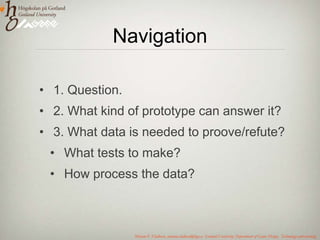Experimental prototyping and play testing using iterative game design is discussed. Prototypes allow designers to base decisions on successive iterations of a game as it is tested and refined. Different types of prototypes are described from early paper prototypes to later software prototypes. Various types of play tests are also outlined such as focus tests, expert evaluations, and free-form play sessions. Obtaining useful data from play tests to answer specific research questions is the focus. Methods like surveys, interviews, video recordings, and data mining game interactions are presented.
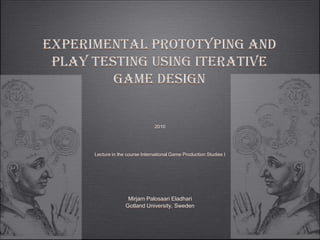
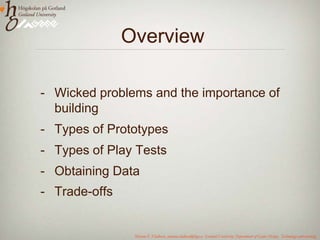
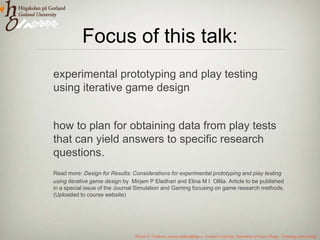
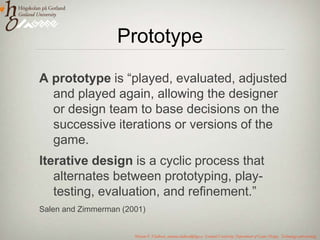

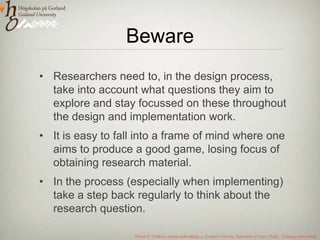
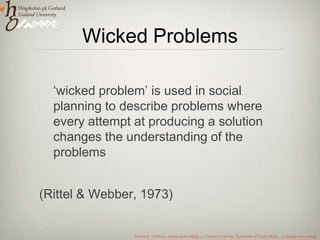
![Expressive AI (2003)Material on this page is from “Expressive AI: Games and Artificial Intelligence” by Michael Mateas, LevelUp Conference, Utrecht 2003 Michael Mateas: “AI-based art and entertainment constitutes a new interdisciplinary agenda linking games studies, design practice, and technical research. “[…] expressive AI provides a language for talking about “readable” behavior, that is, behavior that a player can read meaning into.” Mirjam P. Eladhari, mirjam.eladhari@hgo.se Gotland University, Department of Game Design, Technology and learning](https://image.slidesharecdn.com/game-research-prototyping01-110523023354-phpapp01/85/Experimental-Game-Prototyping-and-Play-Testing-using-Iterative-Design-8-320.jpg)
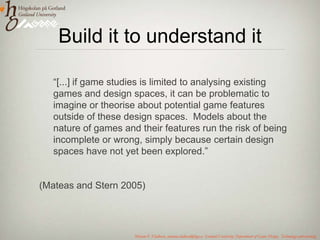
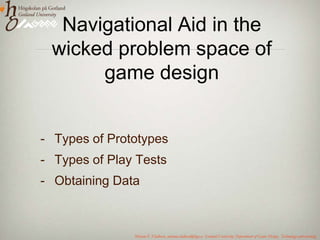
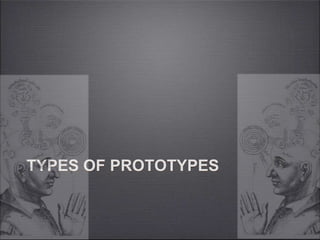
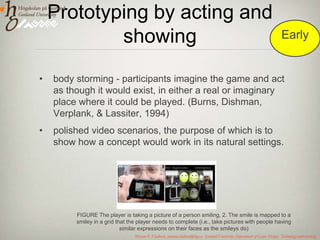
![Wicked problems in game design “For a wicked problem such as game design, exploring design space consists of navigating the complex relationships and constraints among individual design features, while at the same [time] discovering or inventing new features and approaches that expand the design space. All existing games form tiny islands of partially understood regionsof design space; all around these islands lays a vast ocean of unexplored potential design space waiting to be brought into existence through the invention of new features and approaches, and mapped out through the hard empirical work of exploring a variety of designs.”Mateas and Stern (2005)Mirjam P. Eladhari, mirjam.eladhari@hgo.se Gotland University, Department of Game Design, Technology and learning](https://image.slidesharecdn.com/game-research-prototyping01-110523023354-phpapp01/85/Experimental-Game-Prototyping-and-Play-Testing-using-Iterative-Design-13-320.jpg)
![Build it to understand it “[...] if game studies is limited to analysing existing games and design spaces, it can be problematic to imagine or theorise about potential game features outside of these design spaces. Models about the nature of games and their features run the risk of being incomplete or wrong, simply because certain design spaces have not yet been explored.”(Mateas and Stern 2005)Mirjam P. Eladhari, mirjam.eladhari@hgo.se Gotland University, Department of Game Design, Technology and learning](https://image.slidesharecdn.com/game-research-prototyping01-110523023354-phpapp01/85/Experimental-Game-Prototyping-and-Play-Testing-using-Iterative-Design-14-320.jpg)
